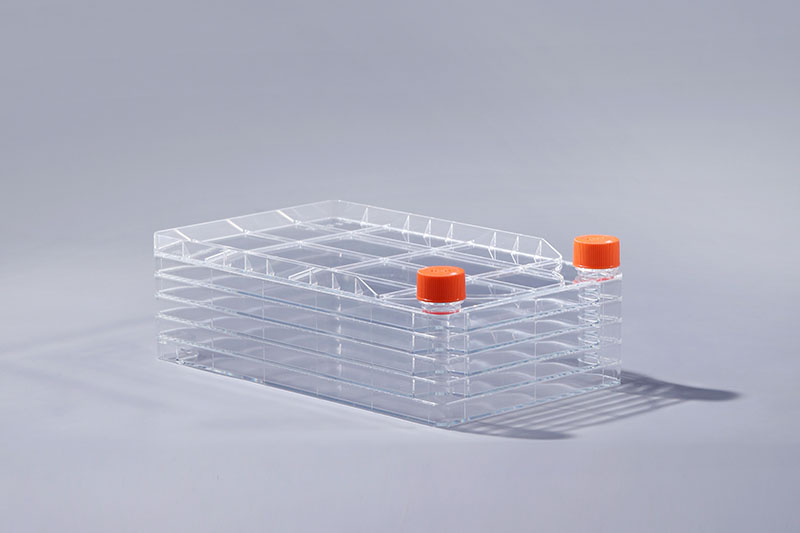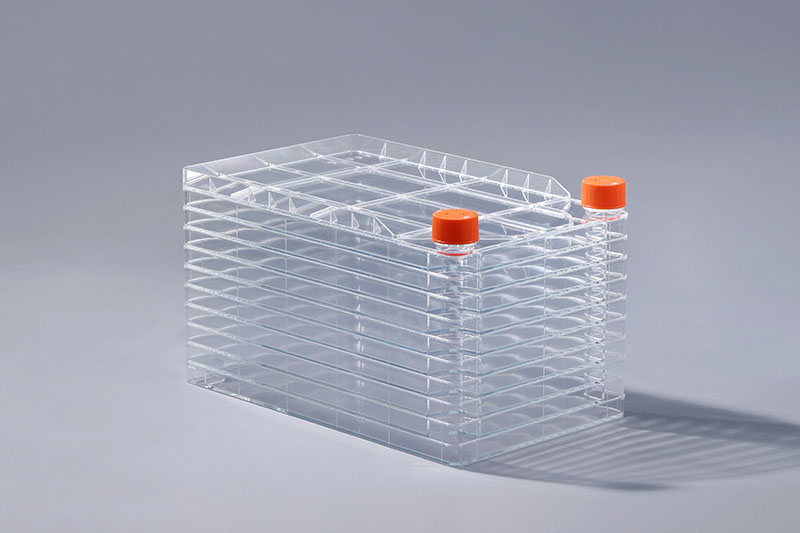With the continuous progress of various production processes, polymer materials are light in texture, rich in raw materials, good in performance and convenient in processing, and are used in all walks of life. As a large-scale cell culture vessel, the cell factory uses polystyrene as the material.
Polystyrene is a polymer synthesized by free radical addition polymerization of styrene monomer. It is a colorless and transparent thermoplastic with a glass transition temperature higher than 100 °C, so it is often used to make various Disposable containers that withstand the temperature of boiling water. This material is rigid and non-toxic, has excellent dimensional stability, and has good chemical resistance to aqueous solutions, but poor resistance to solvents. Transparent, high hardness, generally used in the manufacture of disposable laboratory products. However, products using PS are very brittle at room temperature, and are easy to crack or shatter when dropped.
FuDau 5 Layers Cell Factory
Although it has various performance advantages, the polystyrene material itself is hydrophobic, which is not conducive to the growth of adherent cells. In order to enhance the adherence performance of cells, surface modification treatment is required to introduce hydrophilic groups. in order to allow the cells to grow better. So when we choose a cell factory, we need to choose different surfaces according to the way the cells are cultured.
FuDau 10 Layers Cell Factory
The above are the material characteristics of the cell factory. Thanks to its high transparency and various excellent properties, this material is also used to make cell culture containers such as culture flasks, culture plates, and culture dishes.
The FAI climbed 5.9 percent year-on-year in the first 11 months of 2018, quickening from the 5.7-percent growth in Jan-Oct, the National Bureau of Statistics (NBS) said Friday in an online statement.
The key indicator of investment, dubbed a major growth driver, hit the bottom in August and has since started to rebound steadily.
In the face of emerging economic challenges home and abroad, China has stepped up efforts to stabilize investment, in particular rolling out measures to motivate private investors and channel funds into infrastructure.
Friday's data showed private investment, accounting for more than 60 percent of the total FAI, expanded by a brisk 8.7 percent.
NBS spokesperson Mao Shengyong said funds into weak economic links registered rapid increases as investment in environmental protection and agriculture jumped 42 percent and 12.5 percent respectively, much faster than the average.
In breakdown, investment in high-tech and equipment manufacturing remained vigorous with 16.1-percent and 11.6-percent increases respectively in the first 11 months. Infrastructure investment gained 3.7 percent, staying flat. Investment in property development rose 9.7 percent, also unchanged.
 English
English




















































